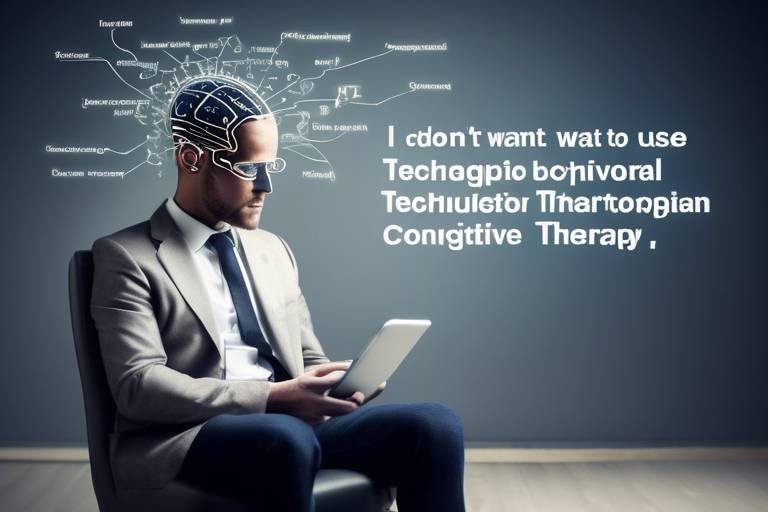The Role of IoT in Smart Grids and Energy Management
In today's fast-paced world, the demand for energy is skyrocketing, and traditional energy management systems are struggling to keep up. Enter the Internet of Things (IoT), a game-changer that is revolutionizing how we manage energy through smart grids. Imagine a world where your home, your car, and even your appliances communicate seamlessly with the energy grid, optimizing energy usage and reducing waste. Sounds futuristic, right? But it's happening now! This article explores how IoT enhances smart grid technology and improves energy management, leading to more efficient energy distribution and consumption.
To grasp the significance of IoT in energy management, we first need to understand what smart grids are. Think of a smart grid as an upgraded version of the traditional electrical grid, equipped with digital technology that allows for real-time monitoring and management of energy resources. This integration enhances reliability and efficiency, making it easier to respond to changing energy demands. With smart grids, utilities can not only supply energy but also manage it more effectively, ensuring that every watt is accounted for. The result? A more resilient energy system that can adapt to the needs of consumers and the environment.
So, how does IoT fit into the picture? IoT technology facilitates the collection and analysis of data from various energy sources, enabling better decision-making and optimized energy usage. Imagine having tiny sensors installed in your home that track your energy consumption in real-time. This data can then be analyzed to provide insights, helping you make informed choices about your energy use. The beauty of IoT lies in its ability to connect devices, creating a network that communicates and collaborates to improve energy efficiency.
One of the most significant advantages of IoT in smart grids is its ability to enable extensive data collection. Smart meters and sensors gather information about energy consumption patterns, allowing utilities to identify areas for improvement. For instance, if a particular neighborhood is using more energy than average, utilities can investigate the cause and take action. This proactive approach not only saves energy but also helps in planning for future demand. The result is a more efficient energy distribution system that benefits everyone.
Imagine being able to track your energy usage in real-time. With IoT devices, this is a reality! Real-time monitoring allows utilities to track energy flows and detect outages promptly. When an outage occurs, the system can automatically alert the utility, ensuring quicker response times and improved service reliability. This capability is particularly crucial during peak demand periods when the grid is under stress. By leveraging IoT technology, utilities can maintain a stable energy supply, even when demand is at its highest.
Another exciting aspect of IoT in energy management is predictive analytics. By analyzing historical data, energy providers can forecast demand and supply fluctuations. This foresight enables them to make informed operational strategies, reducing energy waste and ensuring that supply meets demand. It's like having a crystal ball that helps utilities prepare for the future, making the entire energy system more efficient and reliable.
Incorporating IoT solutions into smart grids significantly enhances reliability. When disturbances occur, automated responses kick in, ensuring a stable energy supply even during peak demand. This level of automation is crucial in today's world, where energy demands can change rapidly. By minimizing human intervention, IoT helps maintain grid stability, reducing the likelihood of blackouts and other disruptions.
The integration of IoT in smart grids offers numerous benefits, including improved efficiency, reduced operational costs, and enhanced customer engagement through better energy management tools. With these advancements, both utilities and consumers stand to gain significantly. Let's explore a few of these benefits further.
One of the most appealing aspects of IoT implementation is the potential for cost savings. By optimizing energy distribution and reducing losses in the grid, both utilities and consumers can enjoy lower energy bills. For instance, when utilities can identify inefficiencies in the grid, they can take corrective actions, leading to a more streamlined operation. This not only saves money but also contributes to a more sustainable energy future.
IoT technology empowers consumers with tools to monitor their energy usage actively. Imagine receiving notifications on your smartphone about your energy consumption, along with tips on how to reduce it. This level of engagement encourages more sustainable practices and fosters a culture of energy conservation. When consumers are informed, they are more likely to make choices that benefit not only their wallets but also the environment.
- What is a smart grid? A smart grid is an electrical grid that uses digital technology to monitor and manage energy resources in real-time.
- How does IoT improve energy management? IoT improves energy management by enabling data collection, real-time monitoring, and predictive analytics, leading to optimized energy usage.
- What are the benefits of IoT in smart grids? Benefits include improved efficiency, cost savings, enhanced reliability, and increased consumer engagement.
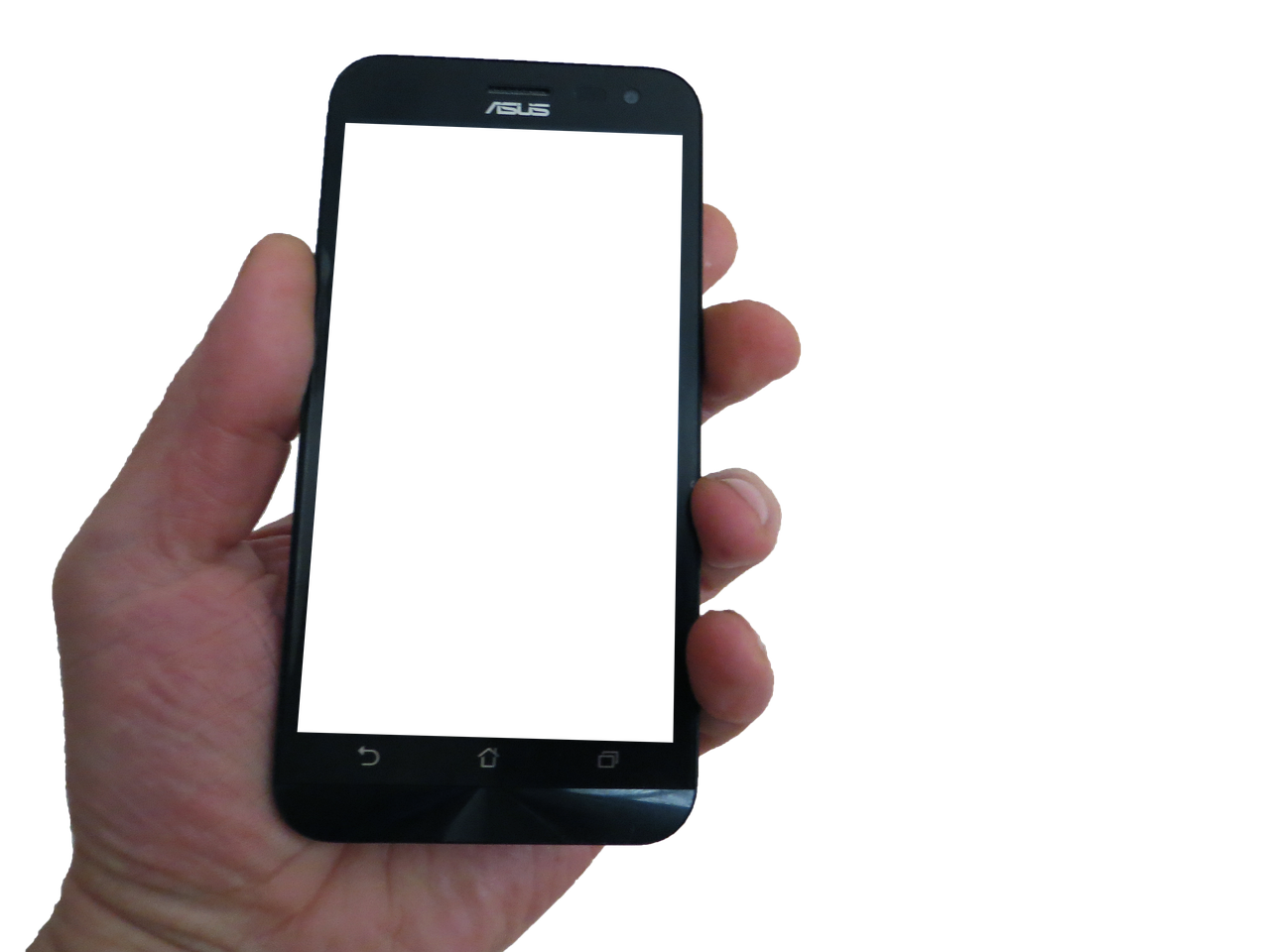
Understanding Smart Grids
Smart grids represent a significant leap forward in the way we manage and distribute electricity. Imagine a traditional electrical grid as a one-way street where energy flows from the utility to the consumer, with little to no interaction. Now, picture a smart grid as a bustling two-way highway, where information and energy flow seamlessly in both directions. This transformation is made possible by integrating digital technology into the electrical grid, allowing for real-time monitoring and management of energy resources.
At its core, a smart grid leverages advanced technologies such as smart meters, sensors, and communication networks to create a more resilient and efficient energy system. These components work together to enhance the reliability and efficiency of energy distribution. For instance, smart meters provide consumers with detailed information about their energy usage, enabling them to make informed decisions about their consumption patterns. This not only helps in reducing energy waste but also encourages a culture of energy conservation among users.
Moreover, smart grids facilitate decentralized energy generation. With the rise of renewable energy sources like solar and wind, consumers can now produce their own energy, contributing to the grid. This shift not only promotes sustainability but also allows consumers to become active participants in the energy market. As a result, the smart grid fosters a more interactive relationship between energy providers and consumers, leading to improved service delivery and customer satisfaction.
One of the most exciting aspects of smart grids is their ability to enhance grid reliability. With the integration of IoT devices, utilities can monitor energy flows in real-time, quickly detect outages, and respond to disturbances automatically. This means that during peak demand periods or unexpected events, the grid can adjust and reroute energy, ensuring a stable supply. The advanced analytics capabilities of smart grids also allow for better forecasting of energy demand, which is crucial for planning and reducing the risk of blackouts.
In summary, understanding smart grids is essential for grasping the future of energy management. By incorporating digital technology, smart grids not only improve the efficiency and reliability of energy distribution but also empower consumers to take control of their energy usage. As we continue to embrace this innovative approach, the benefits will become increasingly evident, paving the way for a more sustainable and efficient energy landscape.

IoT Technology in Energy Management
The Internet of Things (IoT) is revolutionizing the way we manage energy consumption and distribution. Imagine a world where your home appliances can communicate with the power grid, adjusting their energy usage based on real-time data. This is not just a futuristic dream; it’s happening right now! IoT technology facilitates the seamless collection and analysis of data from various energy sources, which allows for better decision-making and optimized energy usage.
At the heart of this transformation are smart meters and sensors that gather extensive data on energy consumption patterns. These devices serve as the eyes and ears of the energy management system, capturing vital information that can be analyzed to identify trends and areas for improvement. For instance, a homeowner can receive alerts about high energy usage during peak hours, prompting them to adjust their habits and save on costs. This proactive approach is akin to having a personal energy coach right in your home!
One of the most significant advantages of IoT in energy management is its ability to enable real-time data collection and analysis. With smart meters installed in homes and businesses, utilities can gather information on energy usage patterns at unprecedented levels. This data reveals insights into when and how energy is consumed, allowing energy providers to make informed decisions. For example, if a utility notices a spike in energy consumption during a specific time of day, they can adjust their supply accordingly, ensuring that there is enough energy to meet demand without overloading the grid.
Real-time monitoring through IoT devices is another game-changer. Utilities can track energy flows and detect outages promptly, ensuring quicker response times and improved service reliability. Imagine a scenario where a power outage occurs; with IoT technology, utilities can pinpoint the location of the outage within minutes. This capability not only enhances customer satisfaction but also reduces the operational costs associated with prolonged outages. In fact, studies have shown that utilities leveraging IoT can reduce outage response times by up to 30%!
Moreover, the integration of predictive analytics into energy management systems allows energy providers to forecast demand and supply fluctuations. By analyzing historical data and current trends, utilities can anticipate energy needs and adjust their strategies accordingly. This proactive approach leads to more informed operational strategies and significantly reduces energy waste. Think of it as having a crystal ball that helps utilities see into the future, allowing them to prepare for changes in energy consumption before they happen.
In summary, IoT technology is not just a buzzword; it is a vital tool in modern energy management. By enabling extensive data collection, real-time monitoring, and predictive analytics, IoT enhances the efficiency and reliability of energy systems, ultimately leading to a more sustainable future. The impact of these technologies is profound, as they empower both utilities and consumers to make smarter energy choices.
- What is IoT in energy management? IoT in energy management refers to the use of interconnected devices and sensors that collect and analyze data to optimize energy consumption and distribution.
- How does IoT improve energy efficiency? IoT improves energy efficiency by providing real-time data that helps utilities and consumers identify patterns, adjust usage, and reduce waste.
- What are smart meters? Smart meters are advanced devices that record energy consumption in real-time, allowing for better monitoring and management of energy use.
- Can IoT technology reduce energy costs? Yes, by optimizing energy distribution and consumption, IoT technology can lead to significant cost savings for both utilities and consumers.
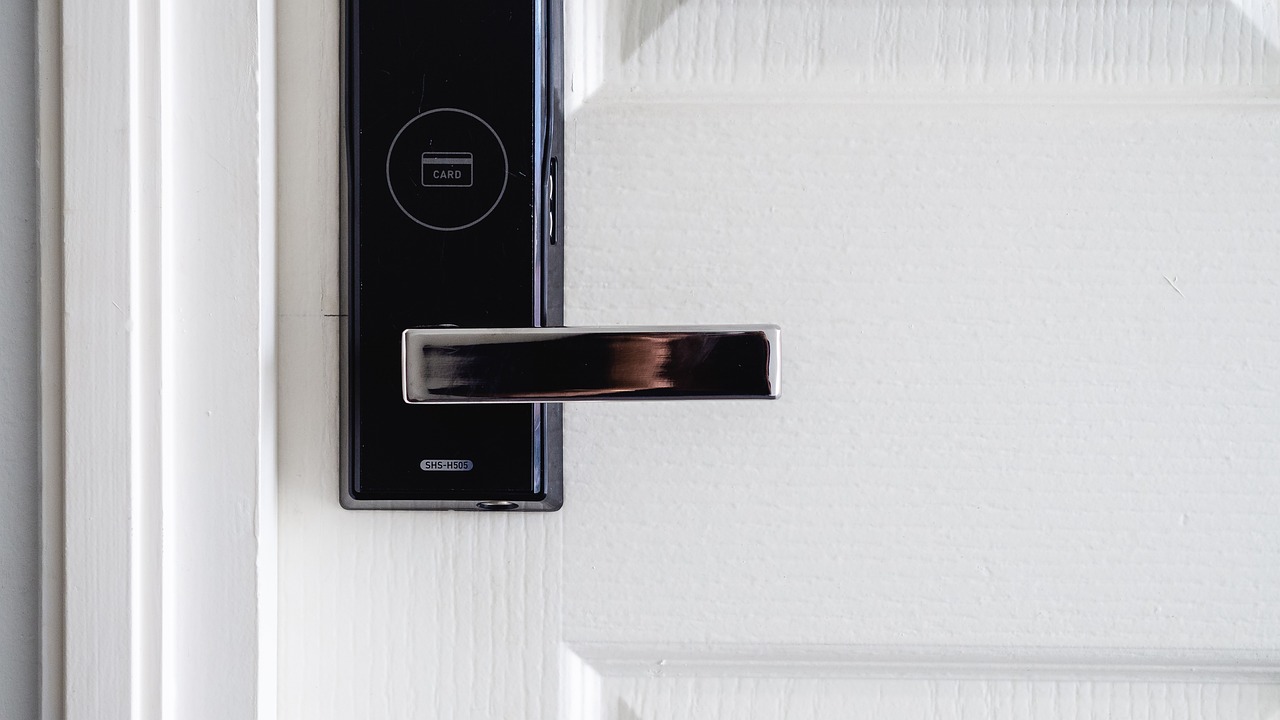
Data Collection and Analysis
The Internet of Things (IoT) is revolutionizing the way we collect and analyze data in energy management. Imagine a world where every device in your home, from your refrigerator to your thermostat, is connected and communicating with each other. This interconnectedness allows for an extensive flow of information that can be harnessed to optimize energy usage. With smart meters and sensors installed across the grid, utilities can gather real-time data on energy consumption patterns, enabling them to make informed decisions that enhance efficiency.
One of the most significant advantages of IoT technology is its ability to provide granular insights into energy usage. By analyzing data collected from various sources, energy providers can identify trends and anomalies. For instance, if a particular area shows a spike in energy consumption during off-peak hours, it could indicate an issue that needs addressing. This data-driven approach not only helps utilities to manage resources better but also empowers consumers to make smarter choices about their energy usage.
Furthermore, the sheer volume of data collected through IoT devices can be overwhelming, but advanced analytics tools can sift through this information to extract valuable insights. For example, predictive analytics can forecast future energy demand based on historical data, weather patterns, and other variables. This capability allows energy providers to adjust their supply strategies proactively, ensuring that they meet consumer needs without overproducing and wasting resources.
To illustrate the impact of data collection and analysis in smart grids, consider the following table that outlines the various data sources and their contributions:
| Data Source | Type of Data Collected | Contribution to Energy Management |
|---|---|---|
| Smart Meters | Real-time usage data | Enables detailed consumption analysis and billing accuracy |
| Sensors | Voltage, current, and frequency readings | Helps in monitoring grid health and detecting anomalies |
| Weather Stations | Temperature, humidity, and wind speed | Informs demand forecasting and renewable energy generation |
In summary, the integration of IoT in data collection and analysis is a game-changer for energy management. It not only enhances the operational efficiency of utilities but also fosters a more sustainable approach to energy consumption. As we continue to embrace this technology, we can expect to see even more innovative solutions that will transform the way we think about energy usage.
- What is the Internet of Things (IoT)? The IoT refers to the network of interconnected devices that communicate and exchange data with each other, enabling smarter decision-making.
- How does IoT improve energy management? IoT enhances energy management by providing real-time data collection and analysis, allowing for better decision-making and optimized energy usage.
- What are smart meters? Smart meters are advanced energy meters that provide real-time data on energy consumption, enabling utilities and consumers to monitor usage more effectively.
- Why is data analysis important in smart grids? Data analysis is crucial in smart grids as it helps identify consumption patterns, predict demand, and optimize energy distribution, leading to increased efficiency and reduced waste.

Real-Time Monitoring
Imagine being able to see your energy consumption as it happens, like watching a live sports game where every play counts. through IoT devices makes this possible, transforming how utilities manage energy flow and respond to issues. With smart meters and sensors embedded throughout the grid, energy providers can track usage patterns and detect anomalies almost instantaneously. This is not just about convenience; it’s about enhancing reliability and ensuring that the lights stay on even when demand spikes.
When a utility can monitor energy flows in real time, it can quickly identify outages or disruptions in service. For example, if a sensor detects a sudden drop in voltage in a particular area, it can alert the control center immediately, allowing for a swift response. This proactive approach minimizes downtime and improves service reliability. In fact, studies have shown that utilities using real-time monitoring can reduce outage durations by up to 30%.
Furthermore, real-time data collection allows for a more dynamic approach to energy management. Utilities can adjust energy distribution based on current demand, rather than relying on outdated forecasts. This means that during peak usage hours, when everyone is cranking up their air conditioning or firing up the oven, the grid can automatically reroute power to where it's needed most. It’s like having a smart traffic system that directs cars away from congested routes, ensuring smooth travel.
Additionally, real-time monitoring fosters better communication between utilities and consumers. With smart devices, homeowners can receive alerts about their energy usage, helping them make informed decisions about when to use electricity. For instance, if a homeowner receives a notification that energy prices are peaking, they might delay running their dishwasher until rates drop. This not only saves them money but also helps to flatten demand peaks on the grid.
In summary, real-time monitoring is a game-changer in the realm of smart grids and energy management. By leveraging IoT technology, utilities can enhance reliability, respond to outages more efficiently, and engage consumers in energy conservation. The result is a more resilient and efficient energy ecosystem that benefits everyone involved.
- What is real-time monitoring in smart grids?
Real-time monitoring refers to the continuous tracking of energy flows and consumption patterns using IoT devices, allowing for immediate responses to issues and more efficient energy management. - How does real-time monitoring improve energy reliability?
By detecting outages and disturbances promptly, utilities can respond quickly, reducing downtime and maintaining a stable energy supply. - Can consumers benefit from real-time monitoring?
Yes, consumers can receive alerts about their energy usage, enabling them to make informed decisions and potentially save on energy costs.

Predictive Analytics
In the realm of energy management, plays a pivotal role in shaping how utilities operate and respond to consumer needs. Imagine having a crystal ball that not only shows you the current energy demand but also forecasts future trends based on historical data. That's precisely what predictive analytics does! By analyzing patterns in energy consumption, utilities can make informed decisions that enhance efficiency and reduce waste.
At its core, predictive analytics utilizes advanced algorithms and machine learning techniques to sift through vast amounts of data collected from IoT devices such as smart meters and sensors. This data can reveal trends, such as when peak energy usage typically occurs, or how weather conditions impact energy demand. By understanding these patterns, energy providers can anticipate fluctuations in supply and demand, allowing them to adjust their operations accordingly.
For instance, during a heatwave, predictive analytics can help utilities forecast a surge in electricity demand due to increased air conditioning usage. Armed with this knowledge, they can proactively manage resources, ensuring they have enough supply to meet consumer needs without straining the grid. This not only enhances reliability but also minimizes the risk of outages, which can be costly both financially and in terms of customer satisfaction.
Moreover, predictive analytics can also identify potential issues before they become critical. For example, if a particular area shows a consistent pattern of increased energy consumption, it might indicate an underlying problem, such as equipment malfunction or inefficiencies in the grid. By addressing these issues early, utilities can prevent larger problems down the line, saving time and resources.
To illustrate the impact of predictive analytics, consider the following table that summarizes its benefits:
| Benefit | Description |
|---|---|
| Demand Forecasting | Anticipates energy demand based on historical data, allowing for better resource allocation. |
| Operational Efficiency | Improves the efficiency of energy distribution by optimizing grid management. |
| Cost Reduction | Minimizes operational costs by preventing energy waste and reducing the need for emergency measures. |
| Enhanced Reliability | Increases grid reliability by predicting and addressing potential outages before they occur. |
In conclusion, the integration of predictive analytics into smart grids is a game-changer for energy management. It empowers utilities to be proactive rather than reactive, leading to a more efficient, reliable, and sustainable energy ecosystem. As we continue to embrace the Internet of Things, the potential for predictive analytics in enhancing energy management will only grow, paving the way for smarter, more resilient energy systems.
- What is predictive analytics in energy management? Predictive analytics involves using data analysis techniques to forecast future energy demand and optimize resource allocation.
- How does IoT enhance predictive analytics? IoT devices collect vast amounts of data in real-time, which can be analyzed to identify patterns and trends in energy consumption.
- What are the benefits of using predictive analytics in smart grids? Benefits include improved demand forecasting, operational efficiency, cost reduction, and enhanced reliability of the energy supply.
- Can predictive analytics prevent power outages? Yes, by predicting potential issues and addressing them proactively, predictive analytics can help prevent outages and ensure a stable energy supply.

Enhanced Grid Reliability
In today's fast-paced world, where energy demands are continually rising, the reliability of our electrical grid is more crucial than ever. The integration of Internet of Things (IoT) technology into smart grids plays a pivotal role in enhancing grid reliability. Imagine a scenario where every fluctuation in energy demand is not just met but anticipated. That's the power of IoT! By utilizing a network of interconnected devices, smart grids can automate responses to disturbances, ensuring a stable energy supply even during peak demand.
One of the key features that contribute to enhanced reliability is the ability of IoT devices to detect anomalies in real-time. For instance, if a transformer starts overheating or a power line experiences a fault, IoT sensors can immediately send alerts to utility operators. This rapid response capability allows for quick interventions, minimizing downtime and preventing larger outages. The result? A more resilient grid that can withstand the challenges posed by extreme weather, unexpected surges in demand, or equipment failures.
Moreover, the data collected from various IoT devices enhances predictive maintenance strategies. Instead of waiting for a piece of equipment to fail, utilities can analyze data trends and perform maintenance proactively. This not only extends the lifespan of critical infrastructure but also significantly reduces the risk of unexpected outages. In fact, studies show that predictive maintenance can reduce equipment failure rates by up to 30%!
To illustrate the impact of IoT on grid reliability, consider the following table that compares traditional grid management with IoT-enhanced smart grid management:
| Feature | Traditional Grid Management | IoT-Enhanced Smart Grid Management |
|---|---|---|
| Response Time to Outages | Hours to Days | Minutes to Hours |
| Data Analysis Capability | Manual, Periodic | Real-Time, Continuous |
| Maintenance Strategy | Reactive | Predictive |
| Customer Communication | Limited | Instant, Interactive |
As you can see, the advantages of IoT in smart grids are substantial. Not only do they allow for a more responsive and proactive approach to grid management, but they also foster better communication with consumers. With real-time data at their fingertips, utilities can keep customers informed about outages and expected restoration times, which builds trust and enhances customer satisfaction.
In conclusion, the role of IoT in enhancing grid reliability cannot be overstated. By leveraging the power of connected devices, utilities can ensure a more stable and efficient energy supply, ultimately leading to a sustainable future. Just as a well-oiled machine runs smoothly, a smart grid equipped with IoT technology operates seamlessly, adapting to the ever-changing landscape of energy demands.
- What is a smart grid? A smart grid is an advanced electrical grid that uses digital technology to monitor and manage energy resources in real time.
- How does IoT improve energy management? IoT improves energy management by enabling data collection and analysis, allowing for optimized energy usage and better decision-making.
- What are the benefits of enhanced grid reliability? Enhanced grid reliability leads to fewer outages, quicker response times, and increased customer satisfaction.
- Can IoT help in predicting power outages? Yes, IoT devices can analyze data to predict potential outages, enabling proactive maintenance and quicker responses.
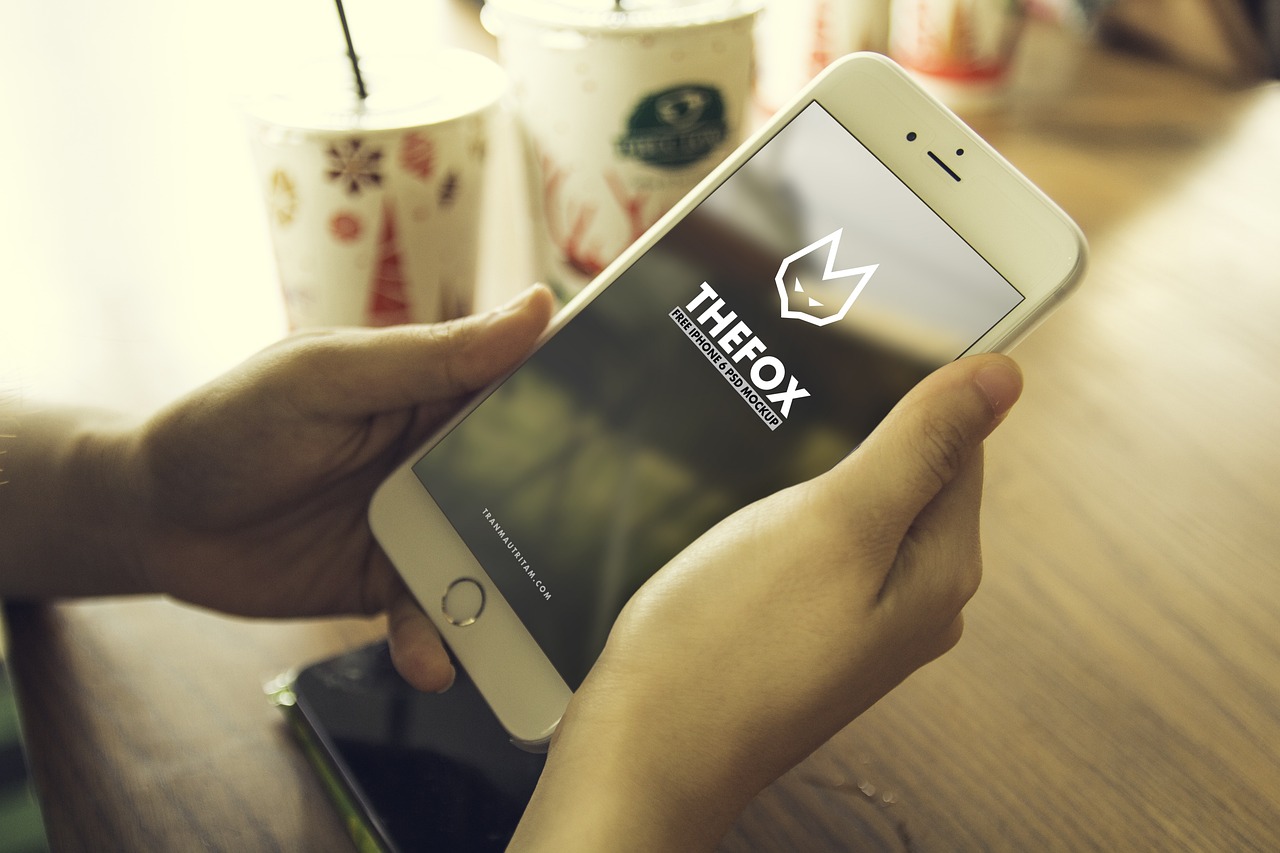
Benefits of IoT in Smart Grids
The integration of IoT technology into smart grids is not just a trend; it’s a revolution that brings a multitude of benefits that can transform the way we think about energy management. Imagine a world where energy consumption is not just monitored but actively optimized in real-time. This is the promise of IoT in smart grids. The benefits are profound, ranging from enhanced efficiency to significant cost savings. Let's delve deeper into how IoT is reshaping the energy landscape.
One of the most significant advantages of IoT in smart grids is the potential for improved efficiency. Traditional energy systems often suffer from inefficiencies due to outdated infrastructure and lack of real-time data. IoT devices, such as smart meters and sensors, allow for continuous monitoring and management of energy flows. This means that energy providers can identify inefficiencies and make necessary adjustments almost instantaneously. For example, if a particular area is using more energy than expected, utilities can respond by redistributing resources to prevent outages and ensure a stable supply.
In addition to efficiency, cost savings are a major benefit that cannot be overlooked. By optimizing energy distribution and minimizing losses in the grid, both utilities and consumers stand to gain financially. According to recent studies, utilities that have implemented IoT solutions have seen a reduction in operational costs by up to 20%. This is achieved through better demand forecasting, which helps in planning energy production and distribution more effectively. Consumers also benefit from lower energy bills as they become more aware of their consumption patterns and can adjust their usage accordingly.
Moreover, IoT technology fosters consumer engagement in ways that were previously unimaginable. With the help of mobile apps and online platforms, consumers can now monitor their energy usage in real-time. This not only empowers them to make informed decisions but also encourages sustainable practices. For instance, if a household notices that their energy consumption spikes during certain hours, they can adjust their habits, perhaps by running appliances during off-peak hours. This shift not only saves money but also contributes to a more balanced energy grid.
To illustrate the impact of IoT on consumer engagement, consider the following table that highlights key statistics:
| Statistic | Impact |
|---|---|
| 65% of consumers | Reported reduced energy bills after using smart meters |
| 70% of utilities | Implemented IoT solutions to enhance customer service |
| 50% increase | In energy conservation awareness among consumers |
In conclusion, the benefits of integrating IoT into smart grids are extensive and far-reaching. From improving efficiency and reducing costs to enhancing consumer engagement, the potential for a more sustainable and reliable energy future is within our grasp. As we continue to advance in technology, the role of IoT in energy management will only grow, paving the way for smarter, greener solutions that benefit everyone.
- What is a smart grid? A smart grid integrates digital technology into the traditional electrical grid to improve the management and monitoring of energy resources.
- How does IoT enhance smart grids? IoT enhances smart grids by providing real-time data collection, monitoring, and analysis, which leads to improved efficiency and reliability.
- What are the cost benefits of IoT in energy management? IoT can lead to significant cost savings for both utilities and consumers by optimizing energy distribution and reducing operational losses.
- How can consumers engage with IoT technology? Consumers can engage with IoT technology through smart meters and mobile applications that allow them to monitor and manage their energy usage in real-time.

Cost Savings
When we talk about the financial benefits of integrating the Internet of Things (IoT) into smart grids, the conversation often centers around one word: efficiency. Think about it like this: just as a well-oiled machine runs smoother and requires less energy, an IoT-enhanced smart grid operates more effectively, leading to substantial cost savings for both utilities and consumers. By optimizing energy distribution and minimizing losses, the potential for financial relief is enormous.
One of the primary ways IoT contributes to cost savings is through real-time data analysis. Utilities can monitor energy flows and consumption patterns continuously, which allows them to pinpoint inefficiencies and make necessary adjustments on the fly. For instance, if a particular area is using more energy than expected, utilities can investigate and address the issue before it leads to larger problems, such as outages or the need for costly infrastructure upgrades.
Moreover, the implementation of IoT technologies can significantly reduce operational costs. By automating various processes, utilities can decrease the need for manual labor and minimize human error. This automation extends beyond just monitoring; it can include everything from automated meter readings to predictive maintenance of equipment. The result? A leaner operation that saves money and resources.
Here's a quick breakdown of the cost savings associated with IoT in smart grids:
| Cost Saving Area | Details |
|---|---|
| Energy Loss Reduction | Minimized energy losses through better distribution management. |
| Operational Efficiency | Lower labor costs due to automation and reduced manual interventions. |
| Maintenance Costs | Predictive maintenance reduces unexpected repairs and downtime. |
| Consumer Savings | Empowering consumers to manage their energy use leads to lower bills. |
Furthermore, as consumers become more engaged with their energy consumption through IoT devices, they can make informed decisions that lead to direct savings. For example, smart thermostats allow homeowners to adjust their heating and cooling based on real-time data, significantly reducing energy bills. This shift not only benefits the individual but also contributes to a more sustainable energy ecosystem.
In summary, the integration of IoT in smart grids is not just a technological advancement; it’s a financial game-changer. By enhancing efficiency, reducing operational costs, and empowering consumers, IoT is paving the way for a more cost-effective energy future.
- How does IoT improve energy efficiency?
IoT improves energy efficiency by enabling real-time monitoring and analysis of energy usage, helping to identify and rectify inefficiencies. - What are the main cost savings from IoT in smart grids?
The main cost savings come from reduced energy losses, lower operational costs, predictive maintenance, and consumer savings through better energy management. - Can consumers really save money with IoT technologies?
Yes, consumers can save money by using IoT devices that help them monitor and manage their energy consumption more effectively.
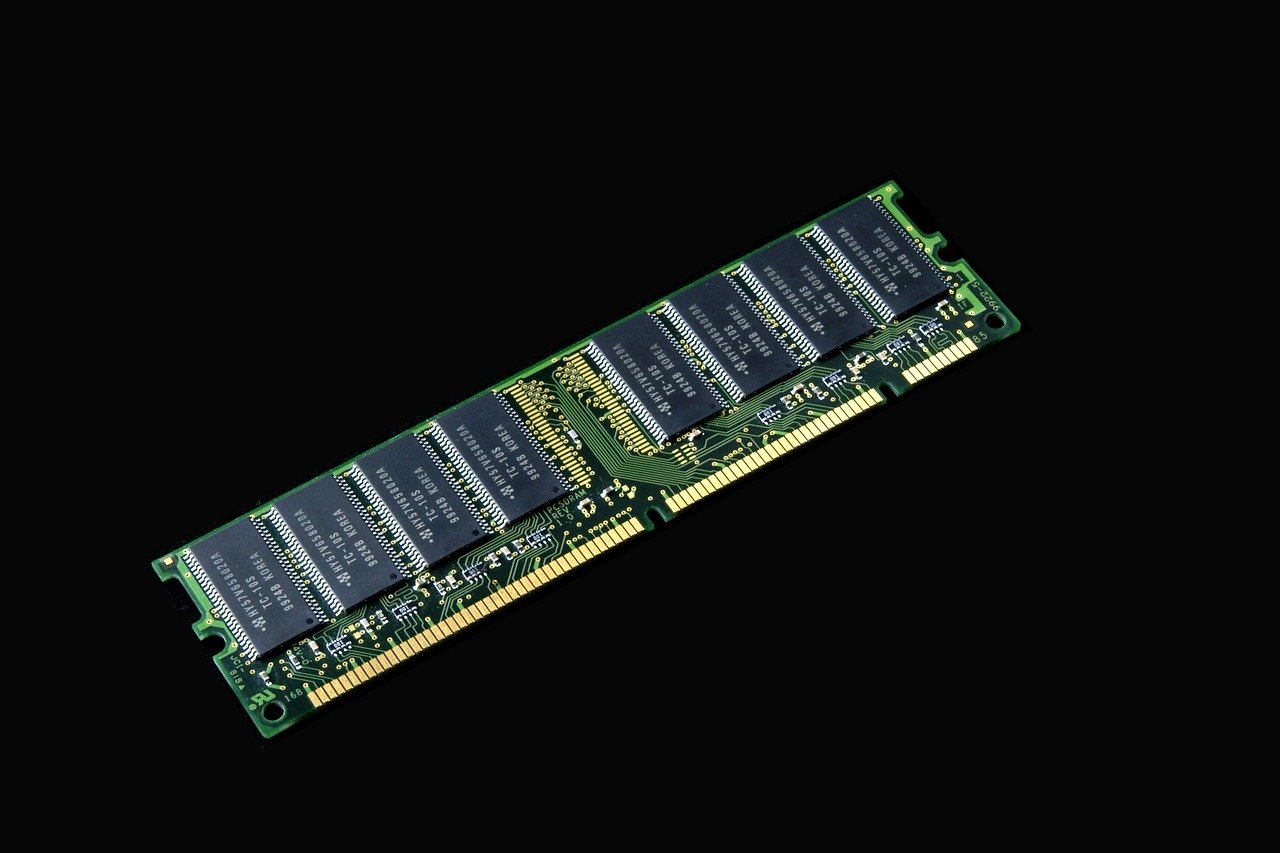
Consumer Engagement
In today's fast-paced world, has become more than just a buzzword; it's a vital part of how we manage our energy consumption. With the integration of IoT technology in smart grids, consumers are no longer passive users of energy. Instead, they are becoming active participants in the energy ecosystem. Imagine being able to monitor your energy usage in real-time, adjusting your consumption based on your needs and preferences, and even contributing to the grid when demand is high. This level of interaction not only empowers consumers but also promotes a culture of sustainability.
IoT devices, such as smart meters and home energy management systems, provide users with valuable insights into their daily energy consumption patterns. This data can be incredibly enlightening, revealing when and where energy is being used most. For instance, did you know that you could save up to 30% on your energy bills simply by adjusting your usage during peak hours? With the right tools, consumers can identify their highest usage periods and make informed decisions about when to run appliances or adjust heating and cooling systems.
Moreover, the gamification of energy consumption is an exciting trend. Many IoT platforms now allow users to set goals and track their progress, turning energy savings into a fun challenge. Users can compete with friends or neighbors, fostering a sense of community and shared responsibility towards energy conservation. This kind of engagement not only helps individuals save money but also contributes to a larger goal of reducing overall energy consumption and minimizing environmental impact.
To further illustrate the impact of consumer engagement through IoT, let's take a look at a comparison of traditional energy management versus IoT-enabled management:
| Aspect | Traditional Energy Management | IoT-Enabled Energy Management |
|---|---|---|
| Data Access | Limited access to usage data | Real-time access to detailed consumption data |
| Consumer Interaction | Minimal interaction and feedback | Active participation and engagement |
| Energy Savings | Reactive adjustments | Proactive energy management |
| Environmental Impact | Less awareness of consumption | Increased awareness and reduction in carbon footprint |
In conclusion, the integration of IoT technology in smart grids is revolutionizing how consumers engage with their energy use. By providing real-time data, fostering community engagement, and promoting proactive energy management, IoT not only empowers consumers but also plays a crucial role in driving sustainability. As we continue to embrace these technologies, the future looks bright for both consumers and the environment.
- What is IoT in the context of smart grids? IoT refers to the network of interconnected devices that collect and exchange data, enhancing the efficiency and management of smart grids.
- How can I benefit from using IoT devices at home? IoT devices can help you monitor your energy usage, reduce bills, and contribute to energy conservation efforts.
- Are there any risks associated with IoT technology? While IoT technology offers many benefits, it’s essential to consider cybersecurity risks and ensure that devices are secure.
- How does consumer engagement affect energy management? Engaged consumers can make informed decisions about their energy use, leading to reduced consumption and lower costs.
Frequently Asked Questions
- What is a smart grid?
A smart grid is an electricity supply network that uses digital technology to monitor and manage the transport of electricity from all generation sources to meet the varying electricity demands of end-users. It enhances the reliability and efficiency of the electricity distribution system.
- How does IoT improve energy management?
The Internet of Things (IoT) improves energy management by enabling the collection and analysis of data from smart meters and sensors. This data helps in understanding consumption patterns, optimizing energy use, and making informed decisions regarding energy distribution.
- What are the benefits of using IoT in smart grids?
Integrating IoT in smart grids offers numerous benefits, including improved efficiency, reduced operational costs, and enhanced consumer engagement. It allows for better energy distribution, real-time monitoring, and predictive analytics to forecast energy demand.
- How does real-time monitoring work in smart grids?
Real-time monitoring in smart grids involves the use of IoT devices that continuously track energy flows and consumption. This technology allows utility companies to detect outages and disturbances quickly, leading to faster response times and improved service reliability.
- What role does predictive analytics play in energy management?
Predictive analytics uses historical data and machine learning algorithms to forecast energy demand and supply fluctuations. This helps energy providers to strategize their operations better, reducing waste and ensuring a more efficient energy supply.
- Can consumers benefit from IoT in energy management?
Absolutely! IoT technology empowers consumers by providing tools to monitor their energy usage in real-time. This visibility encourages sustainable practices and helps consumers make informed decisions to conserve energy and reduce their bills.
- What are the cost savings associated with IoT implementation?
IoT implementation can significantly reduce costs for both utilities and consumers. By optimizing energy distribution and minimizing losses in the grid, operational costs are lowered, which can lead to lower energy prices for consumers.



